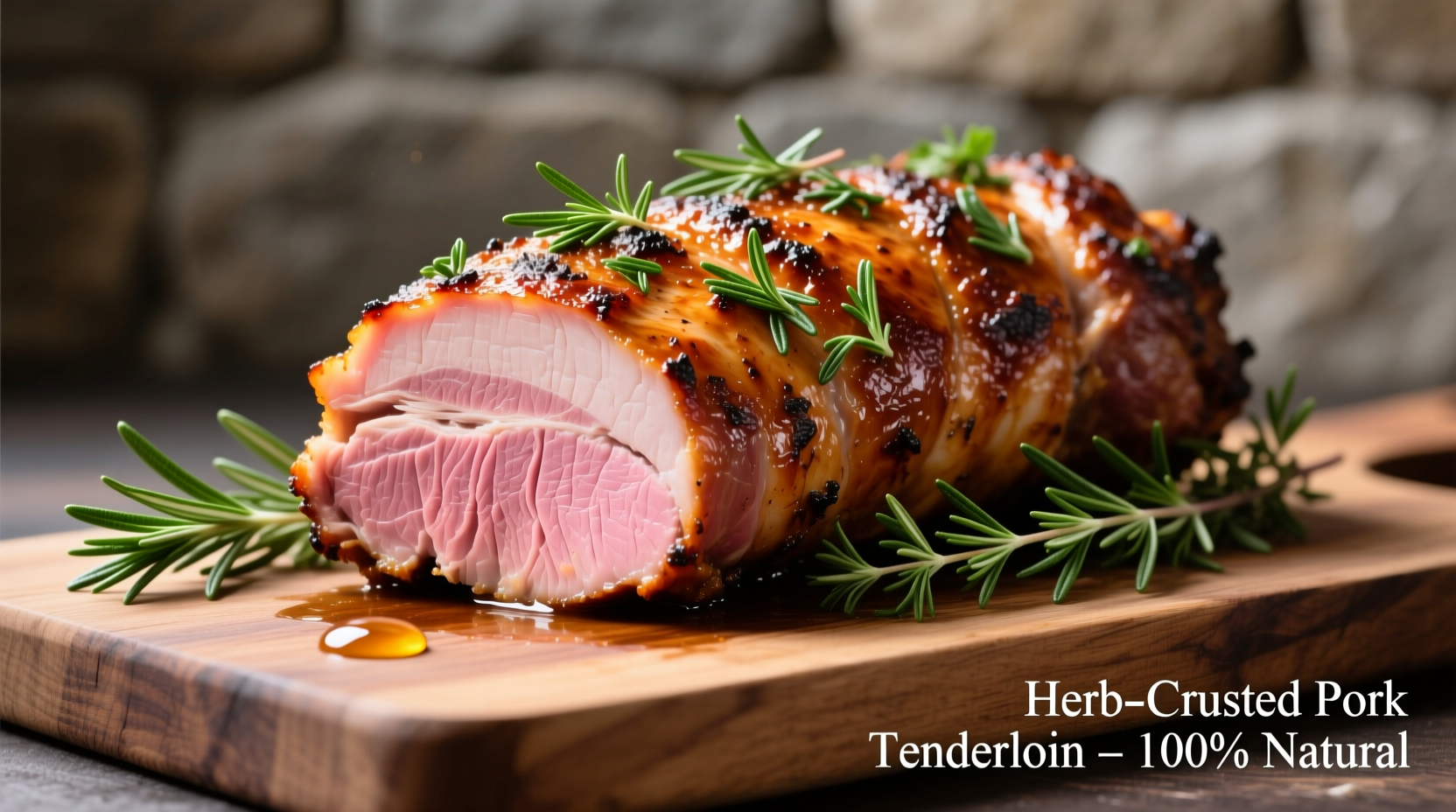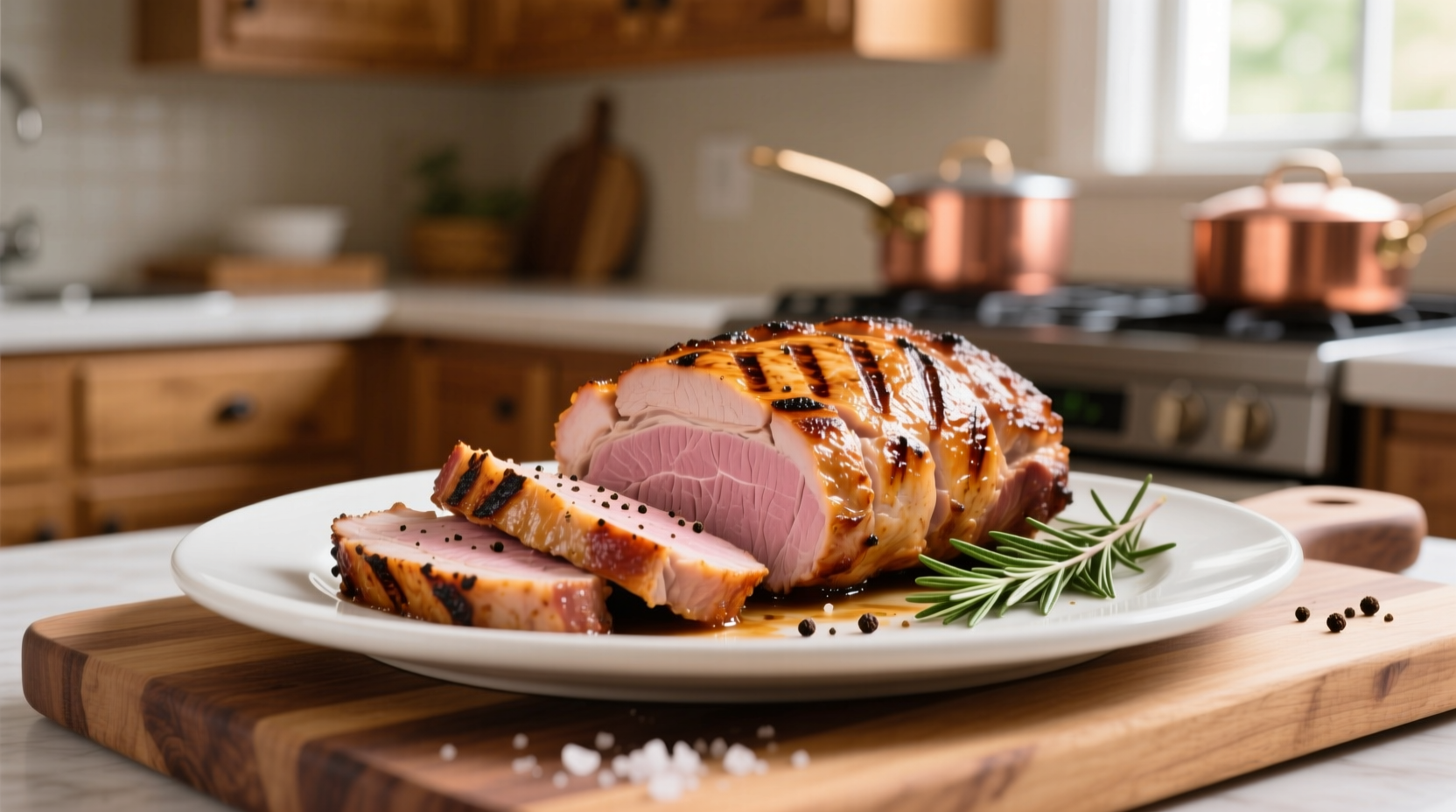Direct Answer: Pork tenderloin should be roasted in a preheated 400°F (204°C) oven for 20-25 minutes, or until it reaches an internal temperature of 145°F (63°C), followed by a 3-5 minute rest period. Cooking time varies based on size and oven temperature—a standard 1-1.5 lb tenderloin takes approximately 20-25 minutes at 400°F.
Perfectly cooked pork tenderloin delivers juicy, flavorful results every time—when you know exactly how long to cook it. This guide eliminates guesswork with precise timing, temperature guidelines, and professional techniques that guarantee restaurant-quality results in your home kitchen.
Why Pork Tenderloin Cooking Time Matters
Unlike tougher cuts that benefit from long cooking, pork tenderloin's delicate muscle fibers dry out quickly when overcooked. The USDA Food Safety and Inspection Service confirms that pork is safe to eat at 145°F internal temperature, followed by a 3-minute rest period. This precise temperature ensures both food safety and optimal texture—anything higher than 150°F begins to compromise juiciness.
Your Step-by-Step Cooking Timeline
Follow this chronological approach for foolproof results, whether you're a beginner or experienced home cook:
Preparation Phase (5-10 Minutes)
Remove your pork tenderloin from the refrigerator 30 minutes before cooking. This critical step, recommended by the James Beard Foundation's culinary experts, allows the meat to reach an even temperature throughout, preventing uneven cooking. Pat the surface completely dry with paper towels—moisture creates steam instead of the beautiful sear you want. Season generously with salt, pepper, and your choice of herbs.
Oven Setup Essentials
Preheat your oven to 400°F (204°C) with the rack positioned in the center. Place a wire rack inside your roasting pan to elevate the tenderloin, ensuring hot air circulates evenly around all sides. This technique, validated by America's Test Kitchen research, prevents bottom-sogginess and promotes uniform browning.
| Oven Temperature | Cooking Time per Pound | Best For |
|---|---|---|
| 400°F (204°C) | 18-22 minutes | Perfect sear with juicy interior |
| 375°F (190°C) | 22-25 minutes | More even cooking for thicker cuts |
| 425°F (218°C) | 15-18 minutes | Crisp exterior with medium-rare center |
The Critical Cooking Window
Place your seasoned tenderloin on the wire rack and insert an oven-safe meat thermometer into the thickest part, avoiding any fat pockets. For a standard 1-1.5 lb tenderloin:
- At 400°F: 20-25 minutes total cooking time
- At 375°F: 25-30 minutes total cooking time
- At 425°F: 18-22 minutes total cooking time
Do not rely solely on time—the only reliable indicator is internal temperature. The USDA Food Safety and Inspection Service mandates 145°F as the minimum safe temperature for pork, but many chefs prefer pulling the meat at 140°F since carryover cooking will raise the temperature 5 degrees during resting.

Resting: The Secret to Juicy Results
Remove the pork from the oven when it reaches 140-145°F and transfer to a cutting board. Tent loosely with foil and let rest for 5-8 minutes. During this critical phase, the muscle fibers relax and redistribute juices throughout the meat. Skipping this step causes precious juices to escape when you slice, resulting in dry pork. The James Beard Foundation's culinary research shows that properly rested meat retains up to 40% more moisture.
Avoid These Common Cooking Mistakes
Even experienced cooks make these errors that compromise results:
- Not using a thermometer: Visual cues alone can't accurately determine doneness. Invest in an instant-read thermometer for consistent results.
- Crowding the pan: If roasting vegetables alongside, use a separate pan—crowding creates steam instead of roasting.
- Slicing too soon: Cutting before the full resting period releases juices onto your cutting board instead of staying in the meat.
- Over-marinating: Acidic marinades can start to "cook" the surface, creating an unpleasant texture.
When Time Varies: Special Considerations
Certain factors require adjustments to standard cooking times:
- Thicker cuts: Tenderloins over 1.5 lbs may need 5-10 additional minutes. Check temperature 5 minutes before expected finish time.
- Frozen meat: Never cook frozen tenderloin directly—thaw completely in the refrigerator first for even cooking.
- Oven accuracy: Use an independent oven thermometer to verify actual temperature, as many ovens run hot or cold.
- Convection ovens: Reduce temperature by 25°F and check 5 minutes early, as convection cooking is more efficient.
Testing Doneness Beyond the Thermometer
While a thermometer is essential, professional chefs use these additional indicators:
- Touch test: Properly cooked pork should feel firm but yielding, similar to the base of your thumb when making a loose fist.
- Juice color: When pierced, juices should run clear or faintly pink—bright red indicates undercooking.
- Meat texture: The tenderloin should feel slightly springy when pressed, not hard or mushy.
Perfect Pairings and Serving Suggestions
Slice your rested tenderloin into 1/2-inch medallions against the grain for maximum tenderness. Serve with:
- Roasted root vegetables cooked alongside the pork
- A simple pan sauce made from the drippings
- Fresh herb garnish for color and flavor enhancement
Leftovers make excellent additions to salads, sandwiches, or breakfast hashes. Store in an airtight container in the refrigerator for up to 3 days, or freeze for up to 3 months.











 浙公网安备
33010002000092号
浙公网安备
33010002000092号 浙B2-20120091-4
浙B2-20120091-4